- Information for Teachers
The latest technology "genome editing" to consider with middle and high school students
2020.10.03
September 19, 2019The distribution system for genome-edited foods has been solidified, and it is now a reality that foods consisting of genome-edited crops will be on our dinner tables. By the time today's middle and high school students reach adulthood, genome-edited crops will be commonplace.
But on the other hand, what is genome editing? What is the difference between genome editing and genetic modification? and "How is its safety investigated? are still not well understood, not only among middle and high school students, but also among adults.
In order to foster in middle and high school students the ability to have correct knowledge about new technologies and to make choices based on their own judgment, we will use "genome editing" as a subject to propose discussion points in the educational setting and introduce examples of actual teacher practice.
Genome Editing Technology Continues to Expand
Genome editing is rapidly spreading in the field of crop breeding. The most well-known method is the use of CRISPR/Cas9, which was introduced in 2012. The advantages of genome editing for breeding are twofold: First, it can be used for all species. First, it can be used to improve plants that could not be improved before due to slow growth, inability to use conventional techniques, etc. Second, it can be used to change the exact location of the target plant. The other is that it is possible to change the exact location of the target. Compared to conventional breeding, where many varieties are crossed to produce a crop that happens to have the desired characteristics, the time required for breeding can be dramatically shortened. The speed is said to be about 10 times faster. It is expected that new crops will be developed in the future.
Crops already developed or under development with genome editing technology
- Tomatoes containing high levels of the health functional ingredient GABA (GABA)
- Potatoes with greatly reduced natural toxins (solanine and chaconin) originally present
- Rice with more grains on the ear for higher yield and lower cost
- Tomatoes that bear fruit without pollination work (leading to labor savings for farmers and stable production in summer)
- Wheat with reduced pre-harvest germination, etc.
Source: "All About Genome Editing! Excerpted in part from BioStation (https://bio-sta.jp/faq/)

Are genome-edited foods safe? How is it different from GMO technology?"
On the other hand, consumers may have questions about the safety of crops produced by genome editing. When considering food safety, it is fundamental to consider food safety in comparison to conventional foods. Conventional food products are those that are made from crops produced by conventional breeding techniques, such as mutation in nature, human-induced mutation (chemicals and radiation), and crossbreeding.
Genome-edited foods are organized and categorized into the three types below.
Three types of genome-edited foods
- Type 1A small portion of the original gene has been altered.
- Type 2DNA: DNA made by altering a part of the original gene and putting it into the creature, thereby altering its genes.
- Type 3: almost the entire exogenous gene in it.
Of these, Type 1 is not considered to fall under the category of recombinant DNA technology because it is a genetic mutation that can occur in nature or in conventional breeding, and its safety is considered to be at the same level as that of conventional foods. Therefore, the rule states that safety screening as a genetically modified food is not required. However, the developer is required to submit detailed information. Almost all crops currently under development are of this type. On the other hand, Type 2 (or part of Type 2) and Type 3 crops, which ultimately contain foreign genes or other changes that cannot occur in conventional breeding, fall under the category of recombinant DNA technology and require a safety review by the Food Safety Commission in the same way as genetically modified foods.
Information to be submitted and published by developers of genome-edited food products
- Name and outline of the food item or variety developed (method and purpose of use)
- Methods of genome editing technology used and details of the modification
- Information on confirmation of the absence of exogenous genes and parts of exogenous genes
- Information regarding confirmation that the identified DNA changes do not result in the production of new allergens or an increase in the number of known toxic substances contained that adversely affect human health
- For modifications that affect the metabolic system to increase or decrease a specific component, information on the major components (limited to nutrients) related to the targeted metabolic system. Information on changes in
- Year and month in which sales will commence
Source: Ministry of Health, Labour and Welfare, based on the Guidelines for Food Sanitation Handling of Foods and Additives Applied with Genome Editing Technology (September 19, 2048).
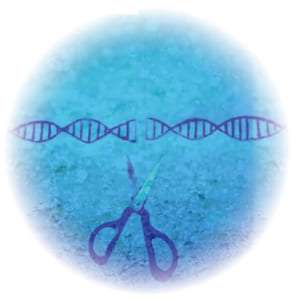
What would happen if we used genome editing technology on humans?"
Now that we have looked at food, students may ask, "What would happen if we used genome-editing technology on living organisms other than plants (mainly humans)?" If we disregard ethical considerations, this technology could be used to create a new type of food. If ethical considerations are ignored, this technology can theoretically be applied to all living organisms, including humans. It is important to note that the risks and ethical issues differ greatly depending on whether one is dealing with germ cells (eggs and sperm) or fertilized eggs, or with somatic cells. In the former case, in principle, it is impossible to obtain the consent of the person who is to undergo the modification, and the effects of the modification will continue to affect his or her descendants. For this reason, reproductive medicine that involves genetic modification of germ cells or embryos is prohibited under the guidelines of the Ministry of Health, Labor and Welfare.
Here are some practical examples of teachers who were among the first to incorporate genome editing into their classes.
Someone," a science magazine for junior and senior high school students, carries articles on researchers involved in genome editing. We hope you will make use of it in your classes!
Special Feature: "Gifts for the Table"
Eat and be healthy! Speed Development of a New Tomato Seed
(Dr. Hiroshi Ezura, Professor of Life and Environment, University of Tsukuba)
Ties to create something that everyone can choose from.
(Masato Kinoshita, Department of Marine Bioproduction, Division of Applied Biological Sciences, Graduate School of Agriculture, Kyoto University)
Beyond steady research, super rice withstands drought!
(School of Life Sciences, University of Nevada Las Vegas Anne Jinky Villacastin)
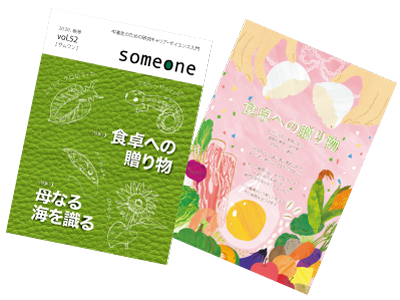
science Consider the social impact of genome editing.
Kaichi Nihonbashi Gakuen Junior & Senior High SchoolYuka Ishizawateacher
Genetic modification and genome editing are not something that is far away in the distant world, but something that affects our lives as well. How these technologies should be used and what kind of rules should be established are issues that society as a whole and each of us should consider. Therefore, we aimed to foster the students' ability to think and make decisions on their own by making them aware of social issues related to genome editing as something close to them.
- Grade: Junior high school junior year
- Subject: Biology
- Course progression: Completion of junior high school science, completion of the genetic field of basic biology, and treatment as an application of the genetic field.
- Number of class hours: 8 hours
Program Flow
1st to 2nd hour
■Lecture on what genome editing is all about
3rd-4th hour
■Investigate what fields genome editing technology is currently being used in and what is expected or feared for the future, using the Internet and other sources.
5th to 8th hour
Each student will summarize, present, and discuss how best to use genome editing technology for the benefit of society based on these ideas in a single poster.
regular examination
■Reorganize and discuss your own opinion again, taking into account the opinions of others (50 points, time limit 30 minutes)
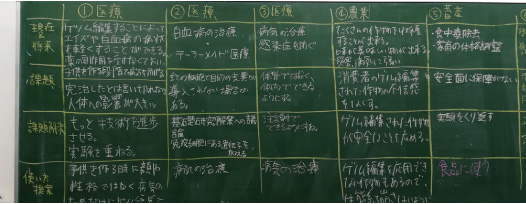
Try teaching a class.
Genome editing is a technology that will be widely used in the future, and it was a good subject to cover in an exploratory activity to do research and think about the future society. Students commented that they enjoyed thinking about future society and agriculture, and that they would like to do research in the field of bioengineering in the future. I felt that the subject of genome editing was easy to handle because it did not have a negative image attached to it compared to genetic modification, etc., and students were able to approach the subject with an open mind.

About the future
Some students are not good at presenting their opinions orally, so we are considering introducing an application that allows students to discuss their opinions online to deepen the discussion. We think it would be more active if we could give points to students who ask good questions.
community Connections between the humanities and sciences made real through genome editing
Johoku Junior and Senior High SchoolRyota Fujitaniteacher
In the third semester of the first year of high school, students decide whether to take a liberal arts course or a science course. After the decision is made, liberal arts students sometimes feel that they do not need to study science-related subjects, while science students sometimes feel that they do not need to study liberal arts subjects, and we felt this was an issue. Therefore, we aimed to make the students realize that knowledge of both humanities and sciences is necessary in the real world by covering the latest topic in the field of science, "genome editing," in the modern society class I am in charge of.
- Grade: 1st year high school student
- Subject: Contemporary Society
- Course progression: With the completion of all modern society classes, the course is conducted as a developmental content related to bioethics.
- Number of class hours: 6 hours
Program Flow
Hours 1-4
Introduction of technologies to manipulate the genes of life, including humans, using science and technology, taking into account current developments.
(The history of cloning, the development of genome editing technologies, methods of treating diseases by genome editing, and the manipulation of appearance and abilities (designer babies) by genome editing.)
5th period
Group discussion on the following three questions
- What life will be like for the first generation of designer babies
- What would be the difference between treating a disease through genome editing and creating designer babies?
- If you could edit the genome for $20 million, would you do it for your own children?
6th period
■ Summarize the contents of the previous discussion and present them to each group. Organize the similarities and differences in the opinions expressed by each group, check the points that should be followed for further discussion and diversity of ideas, and finally summarize your own ideas on the worksheet.
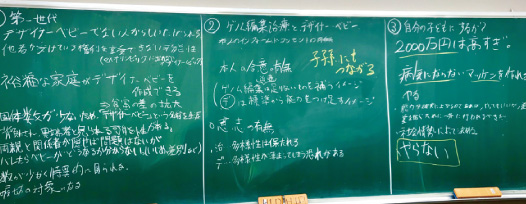
Try teaching a class.
The questions were designed to encourage students to think about the latest scientific technology called "genome editing technology" as if it were their own. During the class, we were careful not to be complicit only with those who were either for or against the technology, while facilitating the discussion. In fact, there were more opinions in favor of the use of genome editing technology with some conditions than those against. For the society teachers, it was essential to collaborate with the biology teachers in order to properly understand and teach the specialized science content, such as the difference between genetic modification and genome editing.
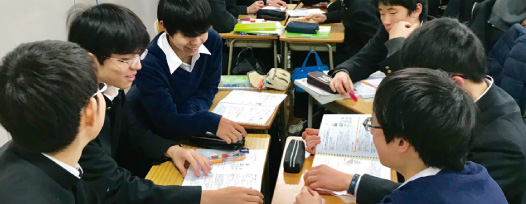
About the future
A lot of time was spent in gathering materials in advance of this event. I feel that in the future, when I teach classes dealing with the latest science and technology, I need to have knowledge of where to obtain credible information.
Educational programs on the subject of genome editing are under development!
We are looking for teachers who are willing to cooperate in conducting model classes.
briefing
11month5Sun.
Since this fiscal year, LIVERNESS has been participating in a national project called "Strategic Innovation Creation Program" led by the Council for Science, Technology and Innovation, Cabinet Office, Government of Japan, to develop a new educational program on the theme of genome editing. Promoting a correct understanding of genome editing and fostering the ability to think, judge, and make choices scientifically is positioned as one of the most important issues not only in the field of education, but also in the nation as a whole.
A prototype of this program will be completed this fall. We are therefore looking for teachers and schools that are willing to cooperate in the implementation of a model class for this program after this winter. Prior to the implementation of the program, we will hold an information session on November 5, 2012. Online participation is also available. We are looking forward to seeing teachers from all over Japan.
What is the Strategic Innovation Program (SIP)?
This is a national project established by the Council for Science, Technology and Innovation, Cabinet Office, Government of Japan, for the realization of science and technology innovation. One of its tasks is smart bio-industrial and agricultural technology infrastructure, and one of the studies included in the project is "improving public understanding of biotechnology and research and study of technological trends. As part of this initiative, we are developing educational programs that can be used in schools.
Outline of Class Implementation
You will be required to conduct a class using the developed teaching materials around December to February. The class is expected to take 2 to 3 hours. We may ask for a pre-conference meeting, cooperation with a pre- and post-questionnaire, cooperation in taking photos and videos, and post-questionnaire interviews. There is no charge for this service.
Image of the program under development
The program is planned to provide basic knowledge, research the latest information, and incorporate elements of group discussion, which can be used in multiple subjects, including science, social studies, and integrated inquiry time. We are currently developing programs with the following three content areas (approximately 2-3 sessions each)
- What is genome editing technology? How is genetic modification different?
- How do you prove safety?
- Genome-edited foods, how would you label them? (As a consumer/supermarket manager/researcher)
Briefing on the implementation of the model class
As the latest information on genome editing technology will be provided, we are also planning to introduce research from leading researchers. If you are interested in this event, please feel free to attend.
Date & Time: Thursday, November 5, 6:00 p.m. - 7:30 p.m.
ContentsThe program is designed to provide a comprehensive education program for students and young researchers, including: introduction of the program, explanation of its implementation, interviews and discussions on the program contents, and introduction of research by leading researchers.
Place of implementation: Tokyo Head Office of Liverness Corporation *You can also participate online.
Briefing feeFree of charge
*Reprinted from "Education Support vol. 47


